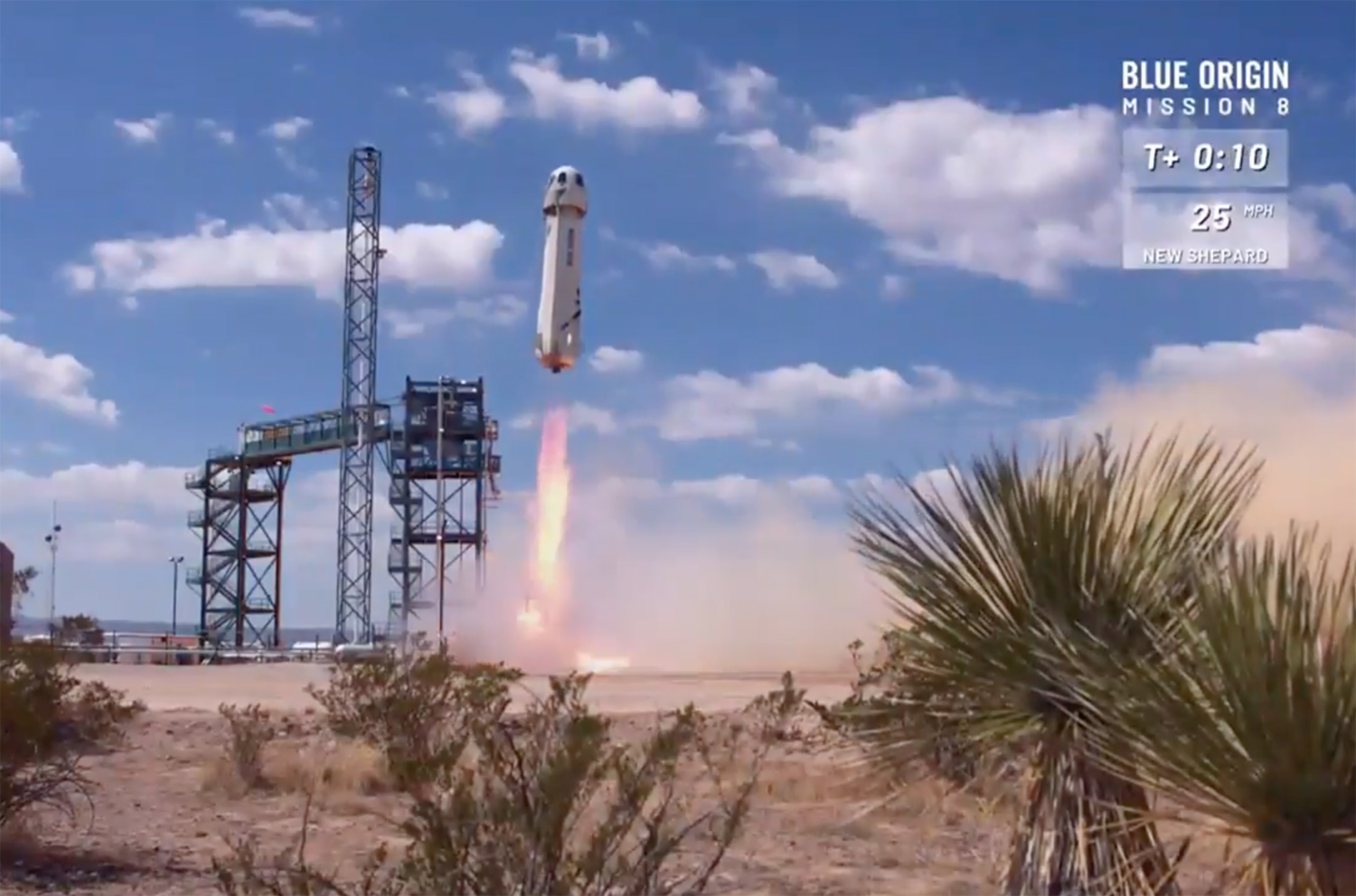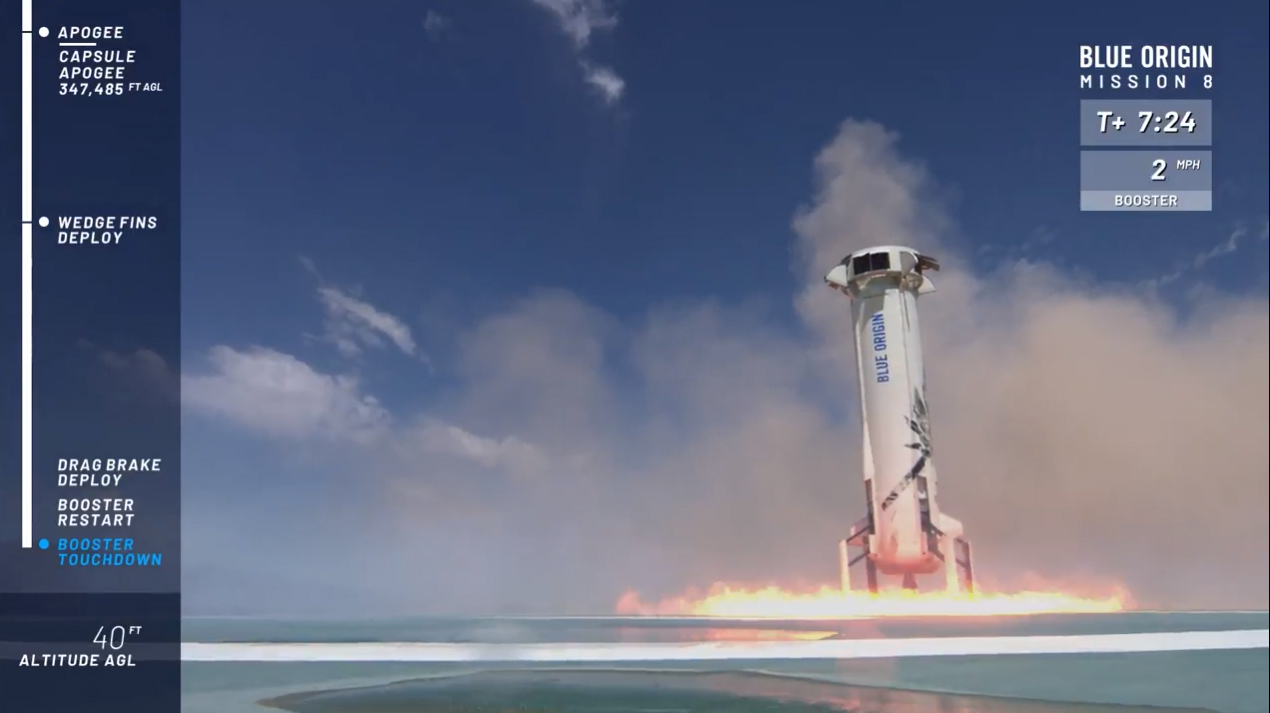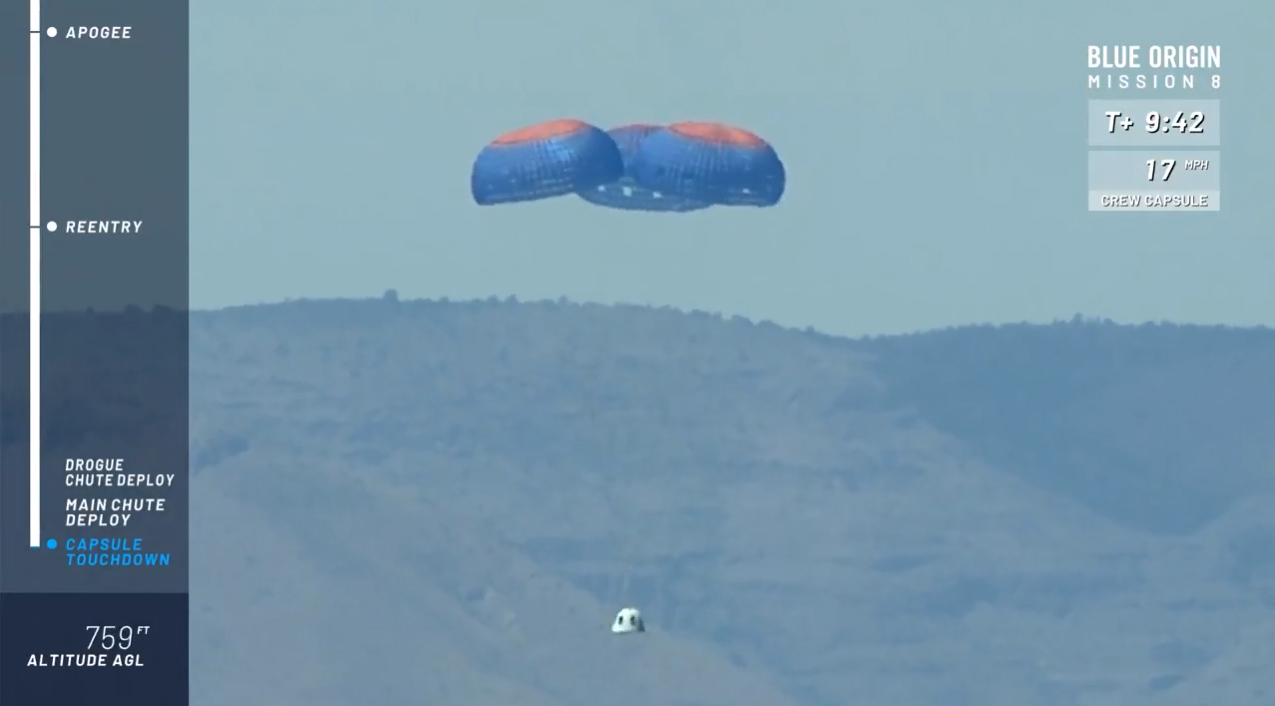Blue Origin Launches New Shepard Space Capsule on Highest Test Flight Yet
Blue Origin, the private space company founded by billionaire Jeff Bezos, launched its passenger spaceship New Shepard on a test flight Sunday (April 29), carrying a dummy astronaut and experiments on their highest spaceflight yet.
The New Shepard 2.0 rocket and capsule, both of which have flown in space before, lifted off from Blue Origin's West Texas launch site at 1:06 p.m. EDT (1706 GMT). Despite several hours of delays (thunderstorms thwarted a 9:45 a.m. EDT launch target) and countdown holds for last-minute checks, the flight appeared to go flawlessly.
"Another spectacular test mission," Ariane Cornell of Blue Origin said during a launch webcast. "Everything looks nominal from here." [Flashback: Blue Origin's 1st New Shepard 2.0 Flight in Pictures]
Blue Origin launched New Shepard to a target altitude of 351,000 feet (106,984 meters), Bezos said after the launch. That's almost 66 miles (107 km), slightly higher than the company's typical target of 62 miles (100 km), the altitude widely accepted as the boundary of space.
"Apogee of 351,000 feet (66 miles, 107 kilometers), and that's the altitude we've been targeting for operations," Bezos said on Twitter after the launch. "One step closer."
Sunday's launch marked the second flight of Blue Origin's New Shepard 2.0 vehicle (after a successful December 2017 test launch) and eighth test flight overall for the company's New Shepard program. An earlier version of New Shepard launched a series of missions in 2015 and 2016 before it was retired.
From liftoff to landing, Sunday's test flight lasted about 10 minutes and 19 seconds. After launching the New Shepard capsule, the booster separated and returned to its launch site, where it made a smooth vertical landing. The capsule fell back to Earth a few minutes later, descending on parachutes and cushioning its own landing with retrorockets.
Breaking space news, the latest updates on rocket launches, skywatching events and more!
Blue Origin's New Shepard 2.0 space capsule is designed to fly six passengers on suborbital space tourism flights — trips that reach space but don't orbit Earth — and can also carry commercial payloads and experiments. It has six large windows to give paying passengers wide views of Earth from space. However, Blue Origin has not yet announced the price of a ticket to fly on New Shepard.
For Sunday's mission, Blue Origin's dummy astronaut — affectionately nicknamed "Mannequin Skywalker" — rode in a passenger seat alongside a series of customer science and technology experiments. Those payloads included an experiment for NASA's Johnson Space Center,several others from European universities funded by the German Aerospace Center, and a "Schmitt Space Communicator" for the company Solstar, which named the experiment after Apollo 17 astronaut Harrison Schmitt (a Solstar adviser).
More New Shepard test flights are expected in the coming months. If all goes well, Blue Origin could potentially begin launching people on New Shepard this year, company representatives have said.
Meanwhile, Blue Origin is busy developing a larger rocket called New Glenn that will launch missions all the way to orbit from Florida's Cape Canaveral Air Force Station in the 2020s. Like New Shepard, the heavy-lift New Glenn rocket will be reusable and fly people into space.
During Sunday's launch webcast, Cornell said Blue Origin's first New Shepard customers will get first dibs on those orbital New Glenn spaceflights but will have to wait until the 2020s for a chance to fly.
Editor's note: This story has been updated to include more details on Blue Origin's New Shepard test flight altitude.
Email Tariq Malik at tmalik@space.com or follow him @tariqjmalik. Follow us @Spacedotcom, Facebook and Google+. Original article on Space.com.

Tariq is the award-winning Editor-in-Chief of Space.com and joined the team in 2001. He covers human spaceflight, as well as skywatching and entertainment. He became Space.com's Editor-in-Chief in 2019. Before joining Space.com, Tariq was a staff reporter for The Los Angeles Times covering education and city beats in La Habra, Fullerton and Huntington Beach. He's a recipient of the 2022 Harry Kolcum Award for excellence in space reporting and the 2025 Space Pioneer Award from the National Space Society. He is an Eagle Scout and Space Camp alum with journalism degrees from the USC and NYU. You can find Tariq at Space.com and as the co-host to the This Week In Space podcast on the TWiT network. To see his latest project, you can follow Tariq on Twitter @tariqjmalik.



